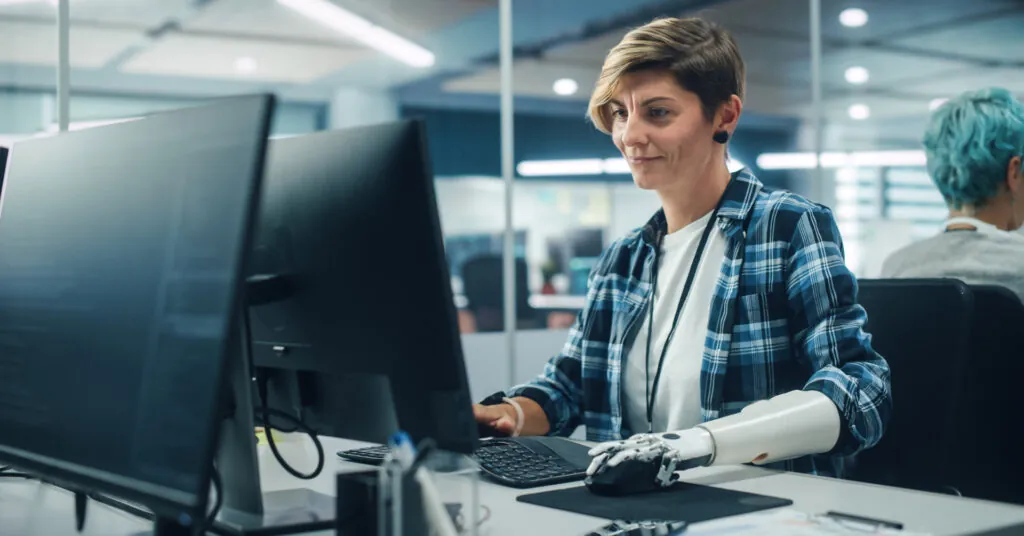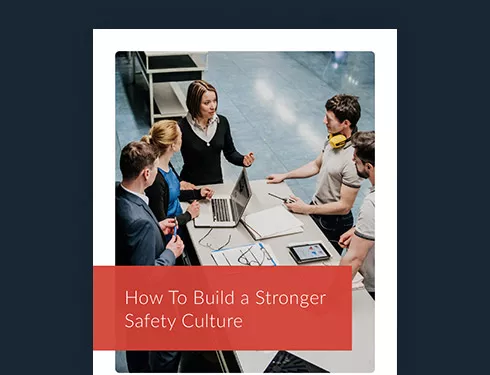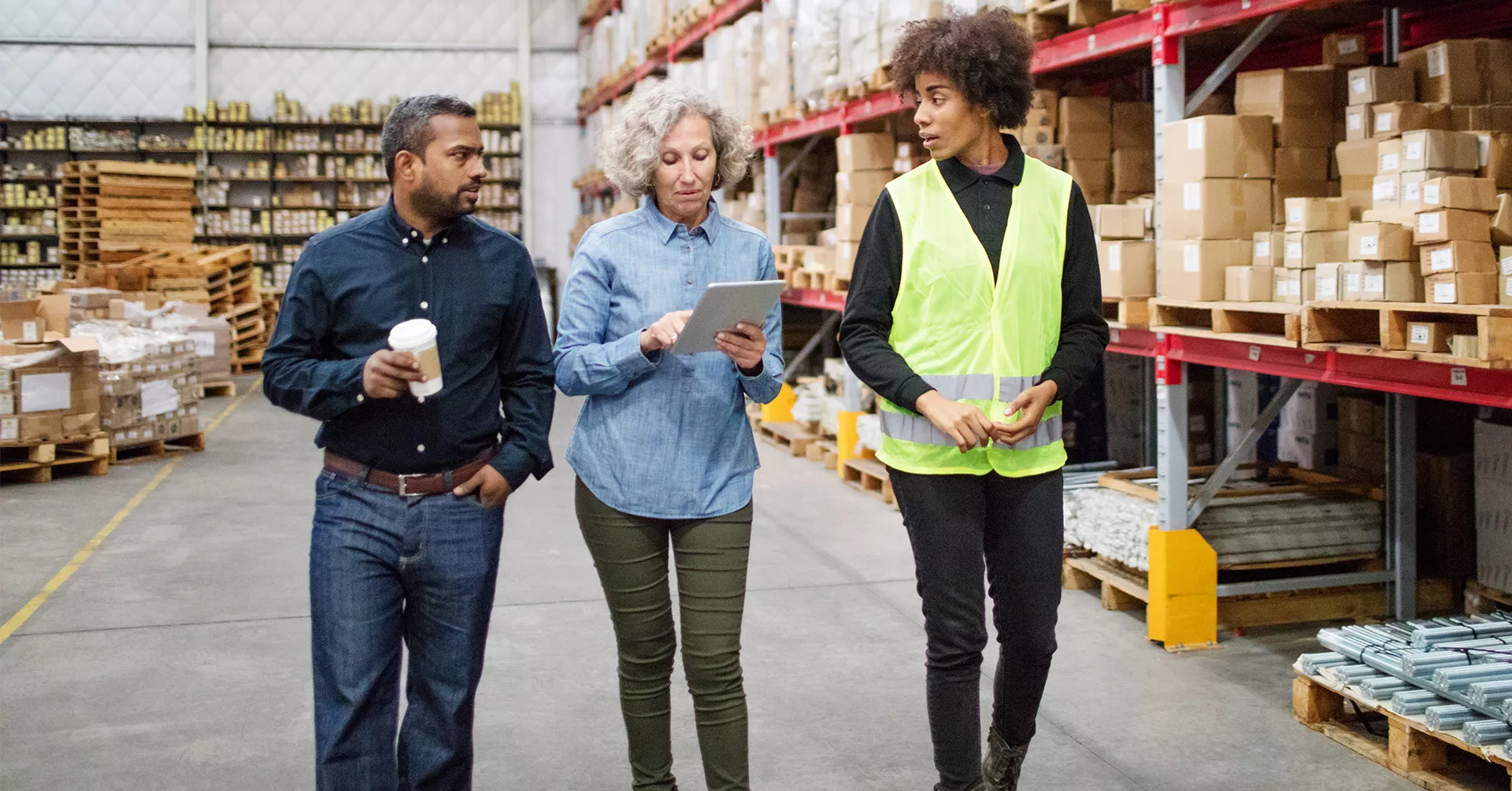
Q&A With Disclo: Disability Inclusion in the Workplace
Hannah Olson, Co-Founder and CEO of Disclo, talks through how employers can successfully navigate disability inclusion and accommodations for their employees while maintaining privacy and psychological safety.

Since the American Disabilities Act was signed into law in 1990, the goal has been to provide a safe, inclusive, and accessible workplace for all employees. Thirty-three years later, 27% of all U.S. employees report some type of disability, and workplace inclusion is more important than ever—and more complicated than most people realize. Many of those with disabilities are afraid to ask for accommodations, and many companies seeking to improve accessibility are afraid of the legal repercussions of getting it wrong.
Hannah Olson, Co-Founder and CEO of Disclo, is devoted to helping organizations manage health disclosures and accommodation requests. Hannah sat down with us on The Employee Safety Podcast to talk through how employers can successfully navigate inclusion and accommodations for their employees with disabilities while maintaining privacy for protected information.
You can listen to the episode on Apple Podcasts, Spotify, or below.
How To Build a Stronger Safety Culture
What Is Disability Inclusion in the Workplace?
A disability is something that substantially limits one or more major life activities, and it can affect anyone—in seen and unseen ways. In the workplace, disability inclusion comes down to a few main things: educating your team about visible and invisible disabilities to promote awareness and understanding, providing disabled employees with reasonable accommodations, protecting those employees from discrimination, and approaching all of these steps with empathy to ensure your workplace is psychologically safe for all of its employees.
Q&A With Hannah Olson, Co-Founder and CEO of Disclo
What’s the first thing safety leaders need to know about accommodating disabilities in the workplace?
The first thing you need to know is that disabilities are everywhere, and more people are impacted than you might think. Seventy percent of disabilities are invisible or non-apparent. So, people like me have disabilities and you may not see it on the outside.
Disabilities can be mental or physical impairment. It’s something that substantially limits one or more major life activities. That’s how the government defines a disability. So, it could be anything such as chronic back pain, anxiety and depression, or alcohol addiction. These are all things that could be falling into that disability category even if you don’t consider yourself or see yourself as being disabled. It really does impact more people than we may think.
“Everyone is impacted by disability in some way. Whether we consider ourselves to be directly working in the disability space or tangentially, it is affecting and impacting all of us.”Hannah Olson Co-Founder and CEO of Disclo
I can imagine the safety leaders who are listening to this and they’re probably wondering, isn’t this an HR thing? What would you say to our listeners who aren’t sure if this applies to them in their role?
Injuries on the job can result in your employees now needing workplace accommodations or support. And as I mentioned, we don’t know how many people live with a disability or how much it impacts them on the day-to-day. So perhaps you have an employee who has epilepsy, for example, and they don’t feel comfortable telling their HR department. And what if that employee has a seizure on the job and gets injured? That becomes a safety concern, right? So, while your employees care about physical safety, they also care about their mental or psychological safety. And right now, the process of disclosing a disability and asking for accommodations is not safe; it’s invasive. If you don’t think that the topic applies to you, I hate to be blunt, but it does. Everyone is impacted by disability in some way. Whether we consider ourselves to be directly working in the disability space or tangentially, it is affecting and impacting all of us.
What’s it like for employees who are navigating the workplace with a disability or chronic health condition?
I’ll start by sharing my story because I think it’ll help paint the picture. I myself, as I alluded to, have dealt with chronic illness which I now consider to be a disability. I didn’t realize it at the time. And when I first entered the workplace, I had an IV in my arm that I’d had for about three years, and I was hooked up to antibiotics for eight hours a day every single day on an IV pole. Talk about a safety concern. I saw first-hand just how challenging it was to navigate the process of telling my boss. I remember getting the job and truthfully being terrified of telling them that I had an IV. And unfortunately, I ended up in a company and career that wasn’t right for me and wasn’t accepting of this situation. Now I’ve dedicated my life to helping people like me, but it’s a very uncomfortable process.
My story is not unique for people with chronic illness and disabilities right now. The process, as I mentioned, is unsafe and it involves you typically having to go to your manager or if you’re lucky our HR department and raising your hand and saying I’m someone with a disability and I need support or I need an accommodation. Now you’ve outed yourself and now you could potentially face discrimination. That’s a very scary process for people, and it’s why most people don’t disclose. So today, working with the disability often involves being silent and having to suffer through that silence because you’re too scared to say anything that could potentially impact your career.
Since the recent pandemic, we’ve started to see a shift in attitude around mental health that just didn’t exist before. Are you seeing more openness and conversation on the disability front as well?
Disability employment reached a record high this past year. So, more people with disabilities are employed than ever before. That is really exciting news. And I think it goes to show exactly your point. We all went remote during COVID very quickly and unprompted, and we didn’t have any idea of how we were going to handle this. I think it’s really shifted the way we treat people with disabilities and the way that we can and are open to accommodating them. I also think we’re starting to have more protection to support people who are pregnant in the workplace. All of this is pushing employers to realize they’re going to lose talent if they don’t meet people where they’re at.
Lastly, there was a huge jump in the amount of people asking for accommodations last year: We saw a 61% increase. It goes to show that more people are feeling like if they don’t get what they need, they’re just going to leave this job and go to a new company. As we enter this return-to-work era right now, more people than ever are going to say, “I actually am someone who needs help.”
What are some of the common challenges for organizations working to grant reasonable accommodations?
I think employers today are facing significant challenges and managing this process. The two main issues are that it’s actually illegal to store any protected health information (PHI) inside of your HR systems or your people systems. So, most companies are relying on these very packed-together methods. They’re using sticky notes and spreadsheets to piece together the accommodations process. The other challenge for companies is the legal issues. Disability is now the number one cause of EEOC (U.S. Equal Employment Opportunity Commission) discrimination lawsuits for businesses. So, companies have not only this storage challenge, but they also have this huge legal issue constantly looming over their head.
So how do you work together as an employer and employee to figure out accommodation?
A lot of it comes down to education and educating managers and HR folks on having these conversations—and navigating them with empathy as well. Like you said, people are only asking for accommodations because they actually need something. It’s very rare that someone’s saying, “I want a standing desk,” just for fun. Companies aren’t going to allow that. So, I think a lot of it comes to education and just teaching people how to be good humans. It seems simple, but that’s really a huge piece of this. How do we make our employees feel safe and comfortable? Through education.
So if someone comes to a manager or the safety director or an HR employee, what’s the process they follow to make sure that everything’s above board? How can they show they’re actually trying to make a serious effort to accommodate?
Documentation is everything. You have to document every single step throughout the process. But I think taking a step back and responding with empathy is one huge piece that’s often missed. People forget how hard it is for that employee to come to them in the first place. Making that person feel safe and feel like you’re here for them throughout the whole process. That’s called an interactive process and it’s just back-and-forth deciding what is a reasonable accommodation. You should document everything, you should involve the right people, and you should really listen to what the employee is asking for and try to come up with a solution before outright denying something. In terms of involving legal, that is a step that may need to occur depending on how complex the case is. But usually what we’re seeing is people asking for very simple, low cost, high-impact things.
What resources would you recommend for employers and employees to learn more about disability accommodations in general?
There’s a great resource from the U.S. Department of Labor. It’s called the Job Accommodation Network. It’s an entire center completely dedicated to accommodations in the workplace. They’ve got great resources for employees, employers, and job seekers. Another great organization would be the DMEC, the Disability Management & Employer Coalition. They do conferences and events for professionals working in the disability space on the employer-facing side. And then we have tons of resources on our site, Disclo.com, for both employees and employers, all written by experts in this space. Those are three great places to start.





